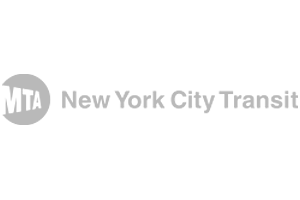Formal verification applications to ensure safety of CBTC systems
A significant number of modern metro systems use CBTC for safer and efficient train operations. While the role of CBTC is straightforward, the systems themselves are quite complex.

Safety is crucial in rail control projects, with potential accidents having severe consequences. Formal verification uses mathematical techniques to ensure the system operates as intended and meets all safety requirements.
Abderrahmane Feliachi2024-07-22T22:31:03+01:00Safety|
A significant number of modern metro systems use CBTC for safer and efficient train operations. While the role of CBTC is straightforward, the systems themselves are quite complex.
Sara El Mennaoui2024-07-22T22:29:35+01:00Safety|
As most signal and verification engineers know, when developing and verifying software for rail control systems, testing can be [...]
Benjamin Blanc2024-06-20T11:55:24+01:00Safety, Webinar|
Learn how formal verification, implemented with a pre-qualified T2 SIL4 tool, Prover Certifier, can be used in a CENELEC EN50128 compliant process.
Sara El Mennaoui2024-06-20T12:03:28+01:00Safety, Webinar|
In this webinar, you will learn how formal verification, a technique that gives 100 % coverage and can be fully automated, can guarantee safety of rail control systems.
Gunnar Smith2024-06-20T11:54:47+01:00Safety, Webinar|
Safety is critical for the railway industry. We believe the method that should be used for safety assurance is Formal Verification. Join us in a webinar on this subject.
Gunnar Smith2024-06-20T11:56:37+01:00Guide, Safety|
Let's discuss why Formal Verification should be used to verify software safety requirements! As a provider of Formal Verification, we are fully convinced that it is the best methodology for safety verification and should be used when engineering safe rail control systems.
Gunnar Smith2024-07-11T12:59:36+01:00Guide, Safety|
Since the introduction of modern software-based automated rail control solutions, the complexity of rail control- and signalling systems has grown significantly. These advanced systems can help optimizing the use of critical infrastructure resulting in a better passenger experience, but the main priority is always to guarantee safety. Here, we share an overview of the safety verification practices commonly used in rail control projects in The United States, Sweden and France.
Gunnar Smith2024-07-25T18:30:56+01:00Safety|
There are two main kinds of accidents that are worth worrying about: collisions and derailments. An interlocking is safe [...]
Gunnar Smith2024-06-20T10:33:22+01:00Safety|
The digitalized railway signaling systems of today are becoming increasingly complex with more and more functionality added to make better [...]
Abderrahmane Feliachi2024-07-22T22:31:03+01:00Safety|
A significant number of modern metro systems use CBTC for safer and efficient train operations. While the role of CBTC is straightforward, the systems themselves are quite complex.
Sara El Mennaoui2024-07-22T22:29:35+01:00Safety|
As most signal and verification engineers know, when developing and verifying software for rail control systems, testing can be [...]
Benjamin Blanc2024-06-20T11:55:24+01:00Safety, Webinar|
Learn how formal verification, implemented with a pre-qualified T2 SIL4 tool, Prover Certifier, can be used in a CENELEC EN50128 compliant process.
Sara El Mennaoui2024-06-20T12:03:28+01:00Safety, Webinar|
In this webinar, you will learn how formal verification, a technique that gives 100 % coverage and can be fully automated, can guarantee safety of rail control systems.
Gunnar Smith2024-06-20T11:54:47+01:00Safety, Webinar|
Safety is critical for the railway industry. We believe the method that should be used for safety assurance is Formal Verification. Join us in a webinar on this subject.
Gunnar Smith2024-06-20T11:56:37+01:00Guide, Safety|
Let's discuss why Formal Verification should be used to verify software safety requirements! As a provider of Formal Verification, we are fully convinced that it is the best methodology for safety verification and should be used when engineering safe rail control systems.
Gunnar Smith2024-07-11T12:59:36+01:00Guide, Safety|
Since the introduction of modern software-based automated rail control solutions, the complexity of rail control- and signalling systems has grown significantly. These advanced systems can help optimizing the use of critical infrastructure resulting in a better passenger experience, but the main priority is always to guarantee safety. Here, we share an overview of the safety verification practices commonly used in rail control projects in The United States, Sweden and France.
Gunnar Smith2024-07-25T18:30:56+01:00Safety|
There are two main kinds of accidents that are worth worrying about: collisions and derailments. An interlocking is safe [...]
Gunnar Smith2024-06-20T10:33:22+01:00Safety|
The digitalized railway signaling systems of today are becoming increasingly complex with more and more functionality added to make better [...]
Fill out your information here.
In this meeting you’ll find out how digital twins and formal methods can help you achieve your rail control projects in less time and lower costs. And 100% secure system.













Get the latest news and updates about Prover.
| Krukmakargatan 21 118 51 Stockholm Sweden |
+46 (0)8 617 68 00
Get the latest news and updates about Prover.
This website uses cookies to improve your experience. Cookies are small data files that are stored on your device when you visit our website. We use cookies to understand how you use our website and to be able to offer a more personalized and relevant experience.
We also use third-party cookies that help us improve our advertising and marketing. These cookies enable us to show you relevant advertisements based on your interests and past interactions on our website.
We protect your privacy and want to be open about how we use cookies. You can read more about our privacy policy to gain a deeper understanding of how we handle your personal data. If you do not want us to use cookies, you can change your settings at any time. By continuing to use our website, you agree to our use of cookies and agree to our privacy policy.
Settings Approve Reject